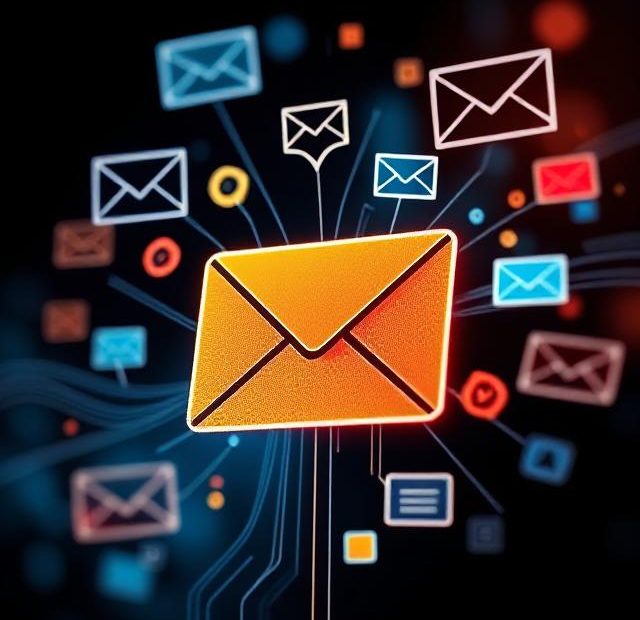Email is one of the most powerful tools in digital marketing and business communication—but it’s also one of the most exploited. Every day, millions of phishing and spoofing attempts occur, where cybercriminals pretend to be someone else to deceive recipients. That’s where email authentication comes in, specifically SPF, DKIM, and DMARC—three essential protocols that help protect your domain and ensure your emails reach inboxes safely.
In this guide, we’ll explain what these technologies do, how they work together, and why implementing them is crucial for your brand’s reputation and email marketing success.
What Is Email Authentication?
Email authentication is a group of techniques that verify that an email is sent from a legitimate source. It helps prevent:
-
Email spoofing (forging sender addresses)
-
Phishing attacks
-
Deliverability issues
Without authentication, your emails could be flagged as spam or rejected altogether by receiving mail servers. Proper setup of SPF, DKIM, and DMARC ensures your emails are trusted and accepted by inboxes across the web.
1. SPF (Sender Policy Framework)
What is SPF?
SPF (Sender Policy Framework) is an email authentication protocol that allows domain owners to specify which mail servers are permitted to send email on their behalf.
When a receiving server gets an email from your domain, it checks the sender’s IP address against the SPF record in your DNS. If the IP is authorized, the message passes SPF.
How SPF Works
-
You publish an SPF record in your domain’s DNS.
-
This record lists all the IP addresses or servers allowed to send emails using your domain.
-
When your email is received, the mail server checks the SPF record.
-
If it matches, the email is more likely to be trusted.
Example SPF Record:
This tells mail servers that only Mailgun and the IP address 192.0.2.1 are authorized to send mail for your domain.
Why SPF Matters
-
Helps prevent unauthorized use of your domain
-
Improves email deliverability
-
Reduces spam and phishing attempts
2. DKIM (DomainKeys Identified Mail)
What is DKIM?
DKIM is an email authentication protocol that adds a digital signature to your emails. It verifies that the email content hasn’t been altered and that the message really came from your domain.
DKIM works by using public-key cryptography. You publish a public key in your DNS, and your mail server signs outgoing messages with the private key. Receiving servers verify the message using the public key.
How DKIM Works
-
Your email server signs outgoing messages with a private DKIM key.
-
You publish the matching public key in your DNS.
-
The receiving mail server retrieves the public key and verifies the signature.
-
If the signature is valid, the message passes DKIM.
Example DKIM Record (DNS TXT):
Why DKIM Matters
-
Protects message integrity
-
Confirms your identity as sender
-
Prevents tampering during transmission
-
Builds trust with mailbox providers (like Gmail or Outlook)
3. DMARC (Domain-based Message Authentication, Reporting & Conformance)
What is DMARC?
DMARC builds on SPF and DKIM. It tells receiving servers what to do when an email fails SPF or DKIM authentication—and provides feedback via reports. You can instruct mail servers to allow, quarantine, or reject suspicious emails.
DMARC also ensures that the “From” domain in the email header matches the domains verified by SPF or DKIM (this is called “alignment”).
How DMARC Works
-
You publish a DMARC policy in your DNS.
-
When an email fails SPF and/or DKIM, the policy tells the recipient mail server what to do.
-
You receive regular reports (XML format) showing who’s sending mail from your domain.
Example DMARC Record:
This tells mail servers to quarantine emails that fail authentication and send reports to the specified email address.
DMARC Policy Options:
-
p=none— monitor only (no action taken) -
p=quarantine— suspicious messages go to spam -
p=reject— unauthorized emails are rejected
Why DMARC Matters
-
Stops spoofing and impersonation
-
Gives you visibility into who’s using your domain
-
Helps enforce proper authentication practices
-
Increases brand protection and trust
How SPF, DKIM, and DMARC Work Together
While each protocol serves a different purpose, SPF, DKIM, and DMARC are most powerful when used together. Here’s how they interact:
-
SPF checks if the sender is authorized
-
DKIM verifies the integrity of the message
-
DMARC ensures alignment and sets a policy for failed checks
By setting up all three, you significantly reduce the risk of phishing and improve inbox placement.
Best Practices for Setting Up Email Authentication
-
Use a reliable email provider (like Mailgun, SendGrid, or Brevo) that supports SPF, DKIM, and DMARC.
-
Set up DNS records correctly—triple-check syntax and domain alignment.
-
Start DMARC with
p=noneto monitor before enforcing rejection. -
Analyze DMARC reports to identify unauthorized senders or misconfigured systems.
-
Gradually move to
p=quarantineorp=rejectonce you’re confident legitimate traffic is authenticated.
Final Thoughts
Email security is more important than ever, and SPF, DKIM, and DMARC are your first line of defense. These authentication protocols not only protect your brand from phishing attacks but also boost your sender reputation and improve deliverability.
Setting them up might seem technical, but the benefits far outweigh the effort. Once configured, you can be confident your emails are trusted, secure, and far more likely to reach your audience’s inbox—exactly where they belong.
Also, you can learn more about Avoid Spam Filters here.
